There’s no better feeling than having someone compliment your jacket and getting to smugly tell them you made it yourself. Clothing customisation is just as rewarding as it is fun, and if you’re looking for a new hobby, you should absolutely consider picking up the skill. While beginning your DIY journey can seem very daunting, the process is actually very simple and it’s super easy to pick up.
Even if you’re not particularly creative or you lack skills like sewing and painting, there’s plenty you can do to make your experience fun and relaxing. You don’t need to spend hours in courses or learning how to craft via meticulous YouTube videos, all you really need is a guiding hand and some tips for getting started.
If you’ve got a particular style in mind; you want to replicate something you’ve seen in a store or you want to start your journey into cosplay, the best place to start is by customising jackets.
I’ve been creating custom jackets for the last few years as a hobby to keep my mind off work. It started with replicating jackets from movies (my very first attempt was a version of The Winter Soldier outfit from Captain America) but it soon spiralled into a custom jacket fever dream that led to my creations featuring in New Japan Pro-Wrestling’s G1 and Super J Cup pay-per-views and Pro Wrestling Guerrilla shows in the United States.
If you’re intrigued by the prospect of creating your own custom jackets, here’s everything you need to know about where to start, what to do, and the best places to get supplies.
What you need to begin your DIY adventures
First, you’ll want to have a vague idea about what you want your jacket to look like. Are you thinking of a badass leather jacket? Something in denim? You’ll need a rough outline in your head before you start gathering your materials and deciding which skills you really need to learn.
To kick off, I’d recommend looking online for inspiration or sketching out what you’re trying to make. Even a rough outline is a great starting point. You don’t need it to be super detailed, just enough that you know what to look for. If you want to start by re-creating something you like, that’s totally okay, too.
Once you know what you want to create, you should break down the individual components involved. This will help you decide what you need to buy to get started.
First, you’ll need a base jacket to work from. (If you want to start your jacket from scratch you can, but the easiest way is to modify existing clothing. It’s cheaper and much more accessible.)
Then you’ll want to identify any accessories you’d like to apply to realise your vision.
Is there painting involved? You’ll want to pick up fabric paint, or acrylic paint and a textile medium. Are there spikes, pins, patches, or jewels? Do you need fluff, extra material or glue? Do you need a needle and thread to attach anything? Jot it all down in a list.
Then the next step is actually finding those materials.
Where to get everything you need
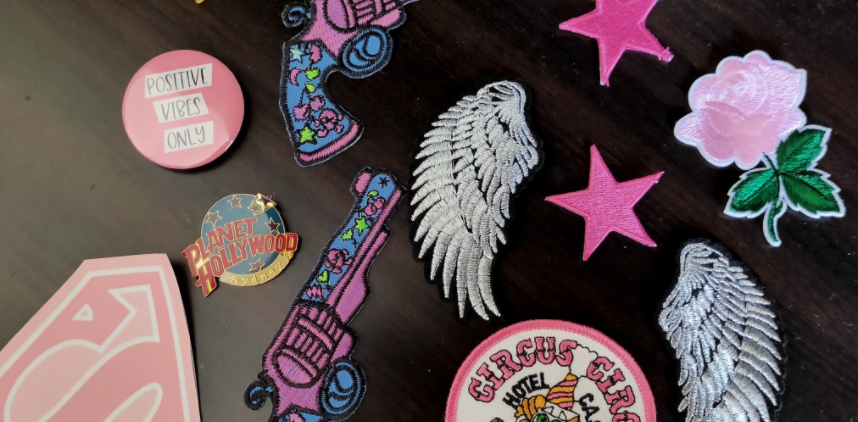
First, the jacket. You can choose something from your own wardrobe to customise, but if that seems a bit daunting you have a few other affordable options. If you’re searching for something specific, check Depop. This website lets people in your local area list their old clothes for cheap — and it’s the easiest way to find jackets for customisation. Failing that, you can also browse your local op shops for hidden gems.
Then spikes, studs, pins and patches. These are the hardest accessories to find in Australia for some strange reason. Spotlight and other mainstream clothing stores don’t tend to stock studs of any kind so if you’re looking for some cool spikes for your new jacket, eBay is your best bet. You’ll want to look for “spike studs” in the Crafts category and search by size (spikes are in millimetres, and you’ll need to estimate your chosen sizing). Overseas shipping can also take a long time, so remember to be patient as you gather your materials.
There’s a whole bunch of stud types to choose from: sew-ins, snap studs, screw-in studs and push studs. All have their merits, but you’ll mostly want the push, screw or sew-in varieties for jacket-making. (More on this shortly.)
For pins and patches, eBay can be great — but if you’re after something special, Etsy is a better option. Here, you’ll find a variety of great accessories and you’ll be supporting local creators.
For material or other sewing accessories, Spotlight or Lincraft (online and in-store) are great. The fabrics are usually reasonably priced, and there’s a great range of accessories you can buy for custom jackets there including jewels, trims and appliques. You can also occasionally stumble on cool fabrics in op shops, so keep an eye on those stores too.
Once you’ve gathered your supplies you will need a few basic skills to kick off your DIY, but none of them are hard to learn.
You can also head to Spotlight to nab all of your DIY essentials, but before you go, grab one of these promo codes to save on your next purchase.
How to sew if you don’t know how to sew
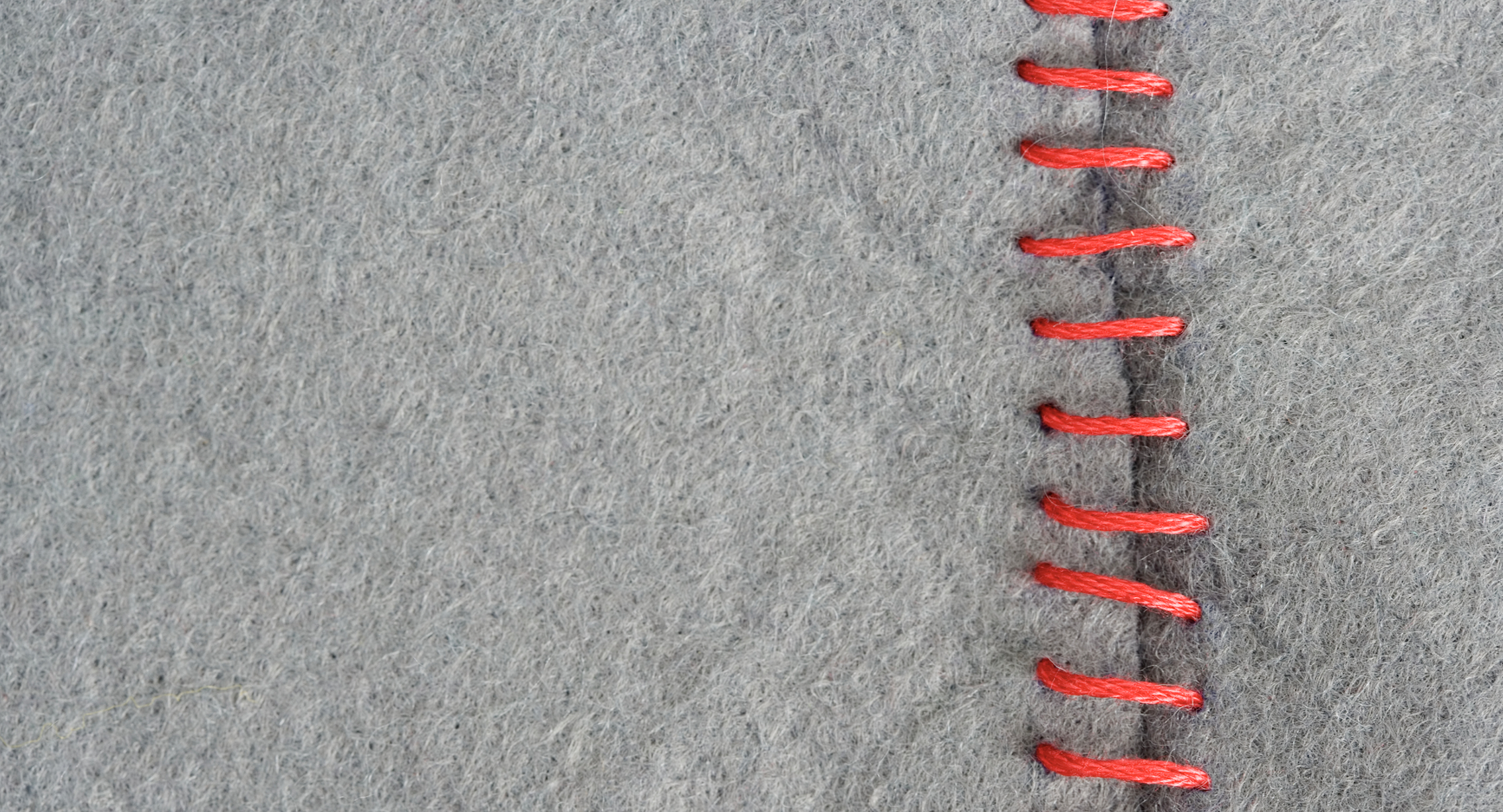
The good news about sewing is you don’t need a machine to sew and you don’t need to be good at it either.
Here’s the thing: sewing isn’t hard. At all. Because it’s not a skill that’s commonly learned in the “modern” era, there’s a sense of reverence around it — but it’s a skill that’s genuinely very easy and accessible to learn.
All you need is a needle and a thread. To start sewing, tie the string through the eye of the needle (double knotting for security) and then push the pointy end of the needle through the bottom of your material. Hold the string as you pull it through so it doesn’t bunch up. Then move the needle slightly away from your first hole and push the needle down again. Congratulations, you’ve made a stitch.
Repeat the process to sew things together. With enough time and practice, the action will become natural.
Once you’re done creating your stitches, you’ll need to tie off your sewing and make sure it’s secure. Do this by forming a loop on the underside of your material and creating a knot with your needle.
If you need a more visual guide, this video is a great introduction to hand sewing. While the process does take more time than using a machine, hand sewing means you’re more in control of what you’re doing and you can have more confidence with your work.
How to attach studs and spikes
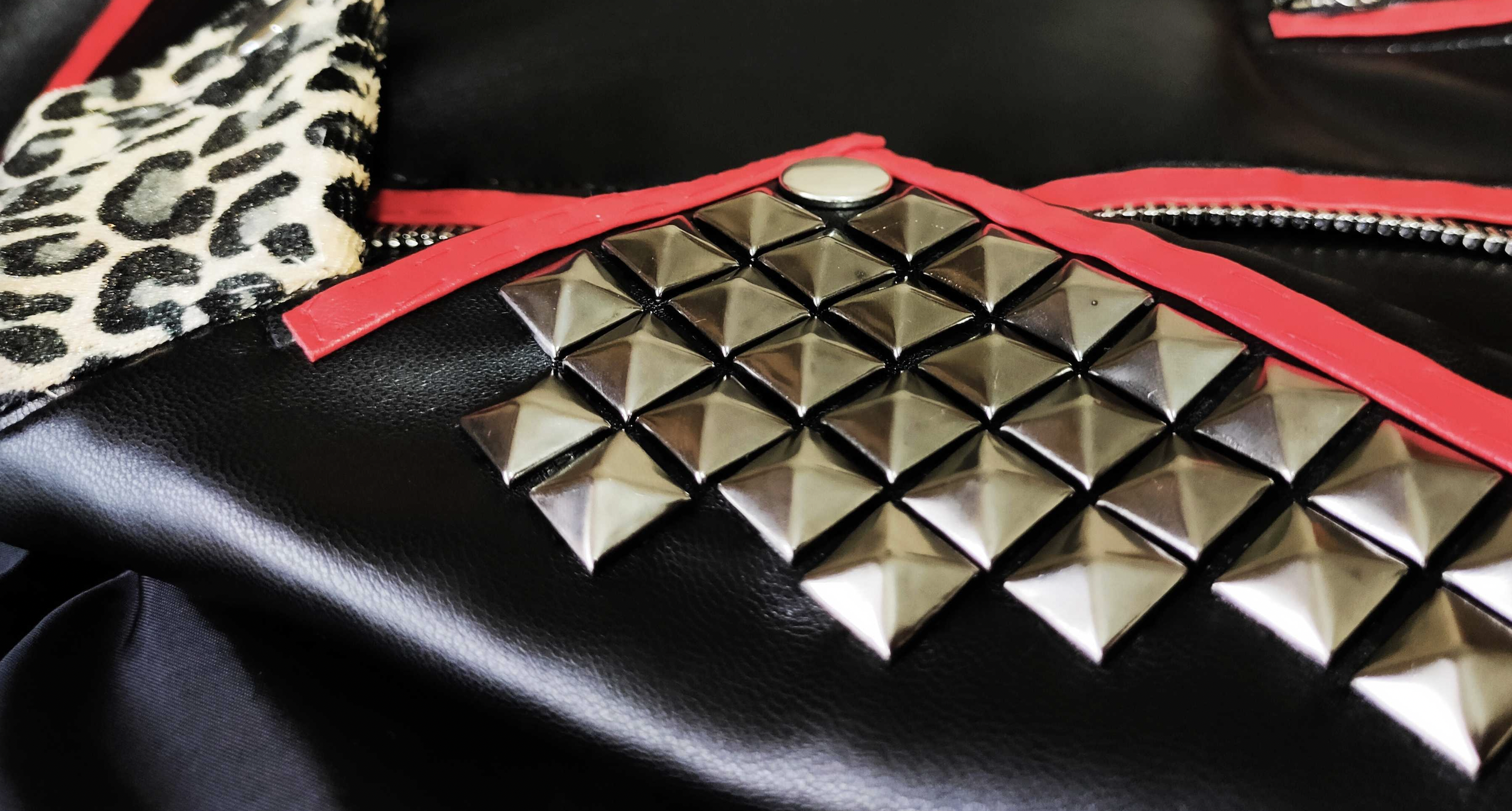
As mentioned, there are a few types of studs you can purchase for your jackets. The main types I’ll go through today are sew-in, screw-in and push studs, which are the most common types available online.
Push studsare the easiest ones to use — these are round or square studs that have tines poking out at the bottom. All you need to do with these studs is line them up against a straight line (a ruler or edge can help you mark this out), push them into your chosen fabric and then fold the tines underneath until they’re not poking out anymore. There’s no real trick to this, you just have to do your best to keep them straight. If you get it wrong the first time, just take the stud out and try again.
Screw-in studs are also fairly simple. These require you to literally screw in the studs like you would with any other material. Simply make a hole with a pointed object like an awl pricker, push the bottom of the stud in and screw the top part of the spike in until it stops.
Sew-in studs are a bit more complicated. These require a basic knowledge of how to sew, as detailed above. Basically, what you’ll need to do here is push a needle and thread through your jacket, slip a stud onto the needle mid-stitch and then finish it as you would normally. If you’re doing a single stud at a time, you’ll need to loop the thread through a few times (3-4) to secure it tightly. If you’re creating a row of sew-in studs, loop the thread through at least twice to secure each stud in place — then continue the stitch as you normally would, looping in as many sew-in studs as you like.
If you’re going for a punk-rock leather look it’s likely you’ll use a combination of all these studs, so knowing how to use each one will help. Each has its own method of application, but all of them will stay stuck in your jacket.
How to create the perfect stencil
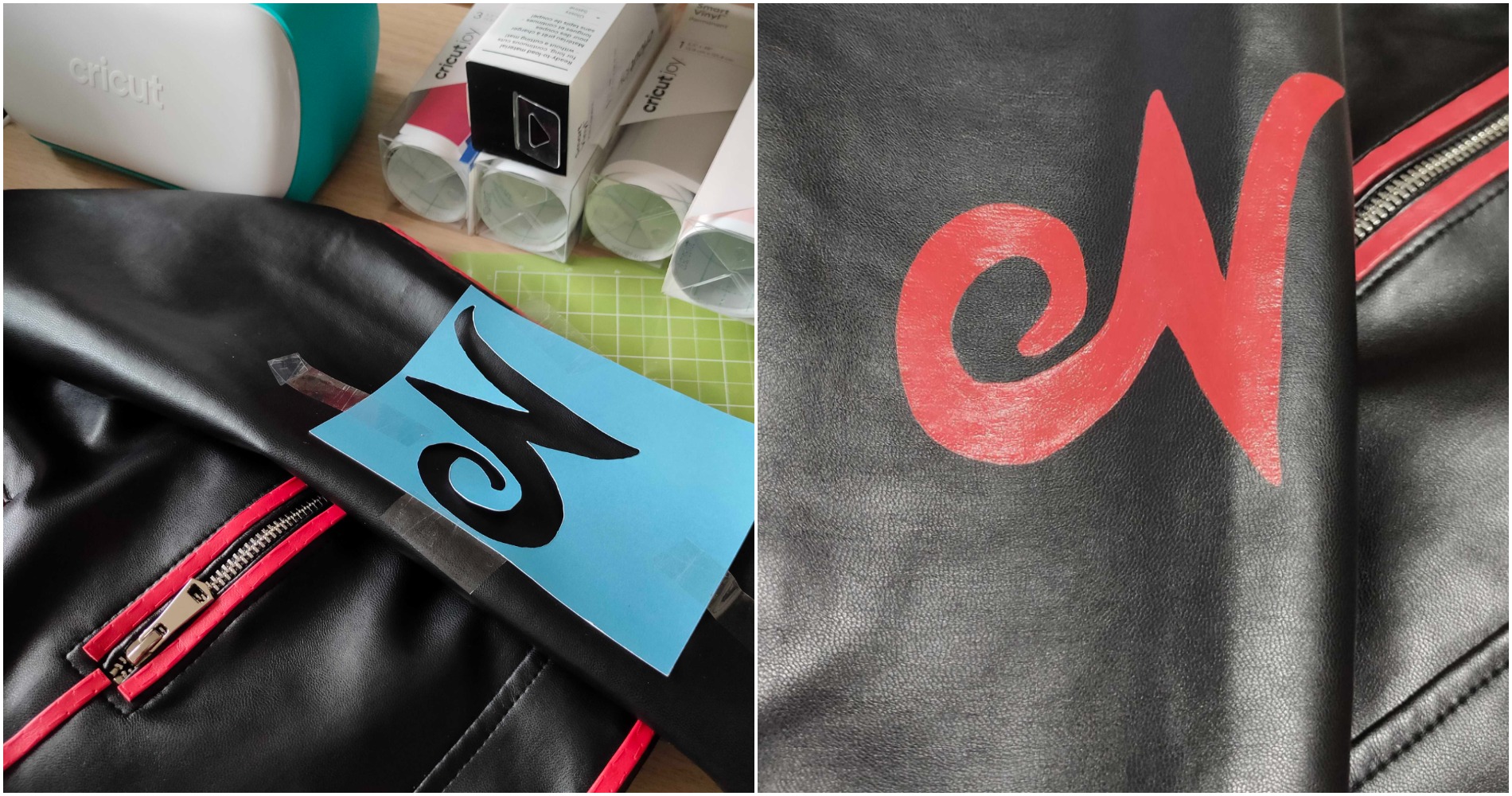
If you’re looking to paint a stencil on your jacket (or apply a custom iron-on) you’ve got a few options here too. First, the long way: doing it by hand.
This requires you to outline a stencil or shape on thin cardboard (using a projector, bright screen or sunlit window), cut it out with a pocket knife, trace it onto your material with a fabric pencil and paint it with a precise hand.
You can see the results of this process here:
Sadly, it takes a million years to create stencils this way, and there’s a much easier way to do it. Recently, I was sent a Cricut Joy for review. It’s a machine I’m very glad I found because it’s extremely useful for creating stencils and iron-ons for jackets.
While you will need to fork out around $295 for a Cricut Joy, it’s extremely helpful for jacket making and lets you cut out any stencils you need. Basically, all you need to do is create the custom shape you want on a computer (as a transparent image) and upload it to the Cricut app. From here, you can hook up your Joy and it’ll cut out the exact patterns you want.
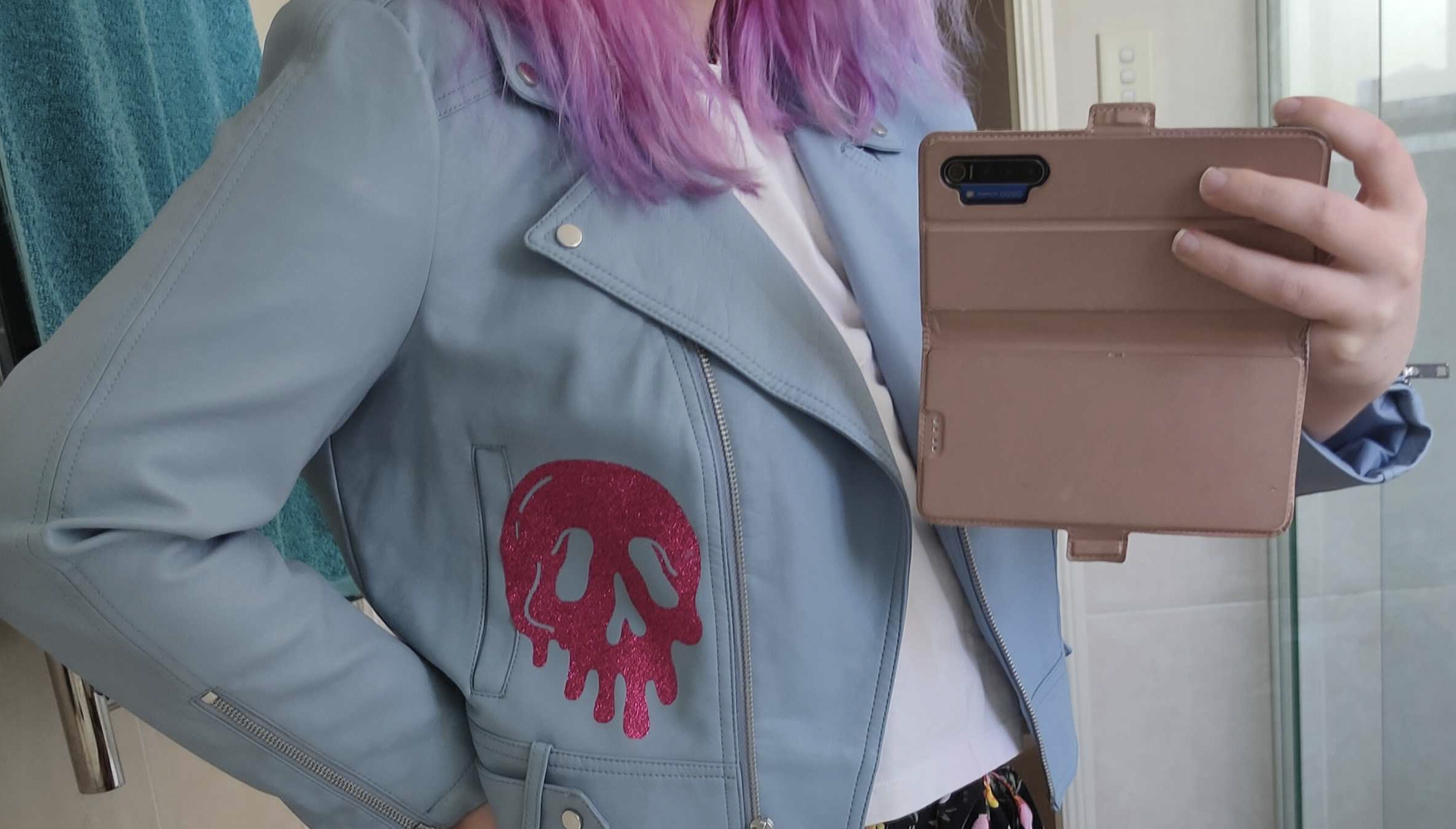
For larger designs like back patches, you may have to look into the more expensive machines like the Cricut Maker — but personally, the Joy was the perfect size for creating my jackets stencils.
Once the design is cut out, all you need to do is trace it onto your jacket and paint it.
Or if you’re feeling more adventurous, you can also use the Cricut Joy to cut directly onto Iron-On vinyl material that can then be attached directly via heat. You can skip the painting stage entirely this way and save yourself a bunch of time.
Each packet of material costs close to $20 so you’ll need to choose wisely, but there are plenty of great options to create your own iron ons — including holographic and glitter colours. (There are also knock-off colours available for cheaper online, but personally, I can’t attest to their quality. The official Cricut ones are a bit expensive, but they work really well.)
Either technique is a great way to personalise your jackets and make them a bit more fun.
How to paint fabric permanently
If you’re looking to paint your jacket with a permanent colour, you’ll need the right tools to make it stick and survive washes. For cloth fabric, it’s slightly easier to achieve this, but leather is a bit trickier.
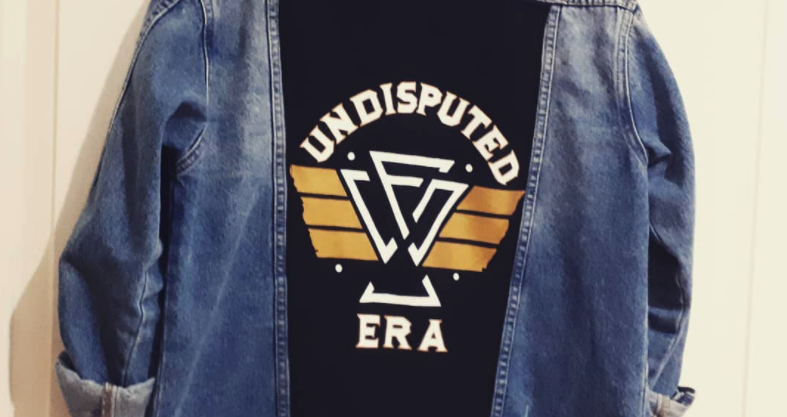
To make sure your paint sticks, you’ll want to invest in a fabric paint or texile medium that’ll make your paint flexible and durable. Personally, I don’t like fabric paint. It tends to be expensive and can rub off easily if you don’t buy from a quality brand.
The best way I’ve found to paint custom jackets is actually to buy plain old acrylics and use a product like this Holcroft Textile Medium to make your paint last. It’s fairly easy to use — you just need to mix equal parts acrylic and medium when you’re painting — and it’ll mean your designs become semi-permanent on jackets. And yes, they’ll survive washes.
While the end result does sometimes feel sticky, this is normal and means you’ve applied the paint correctly. Once it’s dry, the paint is extremely durable and won’t peel, crack or snap.
Can I wash my jacket afterwards?
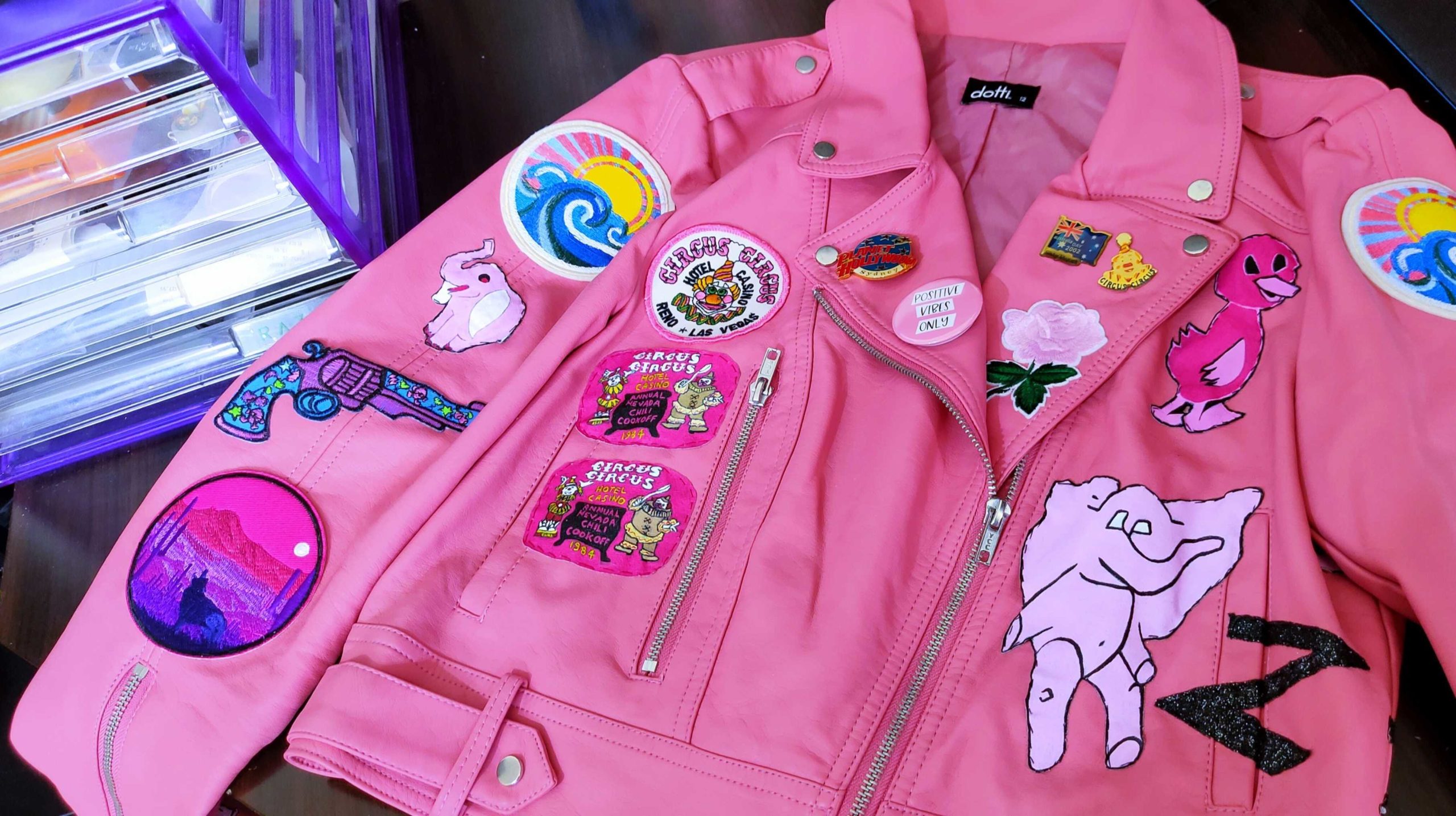
What you put on your custom jacket may remove the possibility of ever washing it — so be sure to consider what you’re customising it with. (A dry clean is still possible, but usually expensive.)
Take the above jacket: it can’t be washed because its patches are painted with plain acrylics that’ll fade (mostly because I was lazy when creating my paint mixes). I might get away with a wash or two, but because the paints are water-soluble the designs will eventually crack, disappear or bleed.
If you use a proper fabric paint mix, you should have no issues, though. Some cheap brands will fade quicker, but using textile medium is a great way to protect your artwork from damage.
Basically, you’ll want to be cautious. Try hand washing your custom jacket first and see how the paint reacts. Studs, patches and other bits of sewing should be just fine, but paints will be a major worry. (Some studs may also rust in the process, depending on which types you buy.)
As long as you take care, you’ll be able to figure out the best ways to look after your new jacket.
What you should avoid doing
Creating custom jackets isn’t a fine art. It’s a process filled with experimentation, mistakes and near-misses. Your jackets won’t be perfect, and it’s likely you’ll stumble at first — but that’s part of why making custom clothes is so fun. It’s a great form of relaxation, and you’re learning useful skills while you create.
That said, there are a few things you can keep in mind to streamline the whole process and make your jacket-making life a bit easier. Here are a few handy tips I’ve learned along the way:
- Don’t worry about being ‘perfect’ right away
- Once you know what you’re doing, fork out extra for the fancier paints and spikes, they’re worth it
- Always make sure your paints are suitable for fabrics — this is the first part of your jacket that’ll fade or get ruined
- Make sure to double-loop sew-in studs so they don’t end up hanging loose or pulling free
- Try not to leave too many big threads inside the jacket, these can be accidentally snapped and you may lose whole rows of studs
- Make sure the jacket base you’re working with suits you before you start work — there’s nothing worse than realising it’s too small after you’ve spent hours working on it
- If you get really into the hobby, invest some money into machines (like the Cricut Joy or Maker) that’ll streamline the process and make your life easier
- Be patient when waiting for any studs or accessories to arrive — these tend to come from overseas and can take months to arrive in Australia
- Take your time with your jackets, and have fun while you’re creating them!
While this advice is just the tip of the iceberg, it’s really all you need to get started. The process of DIY-ing clothing can be stressful, but armed with knowledge there’s nothing you can’t achieve. If there’s something specific you want to achieve, there are plenty of useful guides online. The lovely folks at Spotlight and Lincraft are also very quick to lend a hand, so don’t be afraid to pop into your local store and ask any questions.
Jacket customisation is a relatively straightforward process, and even complicated things can be worked out with a bit of patience. Have no fear, and the world of DIY-ing clothes will open at your fingertips. It’s an incredibly rewarding hobby and one that everyone can enjoy, regardless of skill.
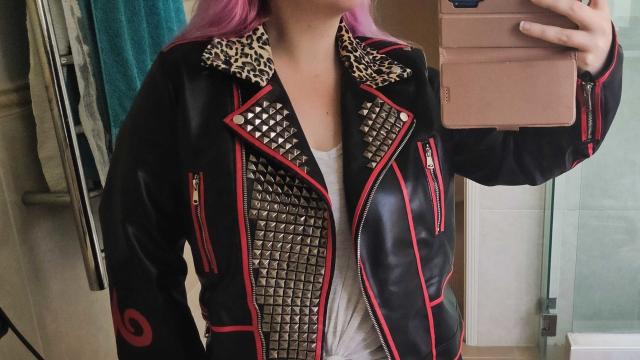
Leave a Reply
You must be logged in to post a comment.